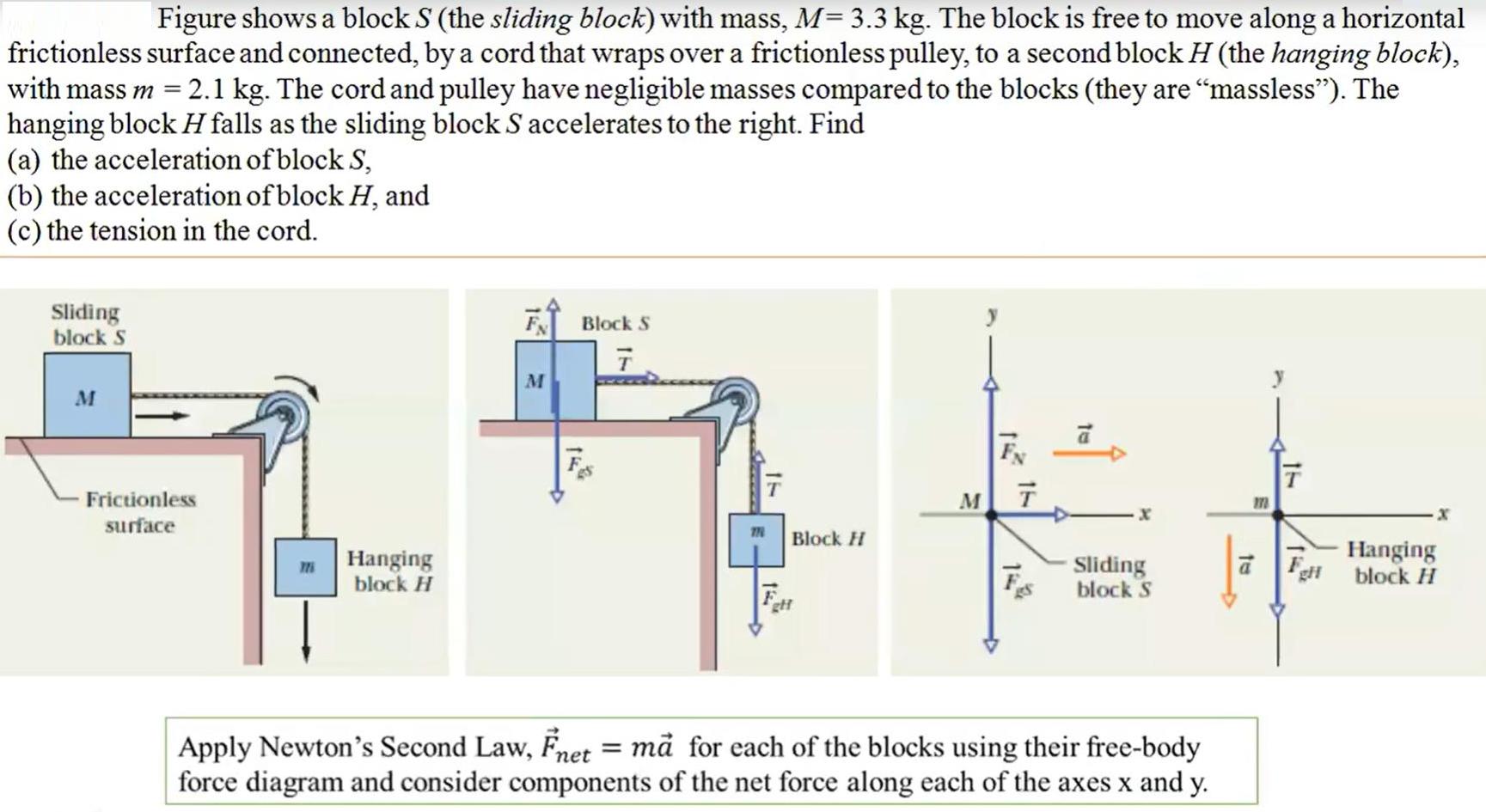Answered step by step
Verified Expert Solution
Question
1 Approved Answer
Figure shows a block S (the sliding block) with mass, M= 3.3 kg. The block is free to move along a horizontal frictionless surface

Figure shows a block S (the sliding block) with mass, M= 3.3 kg. The block is free to move along a horizontal frictionless surface and connected, by a cord that wraps over a frictionless pulley, to a second block H (the hanging block), with mass m = 2.1 kg. The cord and pulley have negligible masses compared to the blocks (they are "massless"). The hanging block H falls as the sliding block S accelerates to the right. Find (a) the acceleration of block S, (b) the acceleration of block H, and (c) the tension in the cord. Sliding block S F Block S M Fx Frictionless surface Block H Hanging block H Sliding block S Hanging a Fet block H gtt Apply Newton's Second Law, Fnet = m for each of the blocks using their free-body force diagram and consider components of the net force along each of the axes x and y. %3D 1 1
Step by Step Solution
★★★★★
3.46 Rating (159 Votes )
There are 3 Steps involved in it
Step: 1

Get Instant Access to Expert-Tailored Solutions
See step-by-step solutions with expert insights and AI powered tools for academic success
Step: 2

Step: 3

Document Format ( 2 attachments)
63607b15a6bba_234261.pdf
180 KBs PDF File
63607b15a6bba_234261.docx
120 KBs Word File
Ace Your Homework with AI
Get the answers you need in no time with our AI-driven, step-by-step assistance
Get Started


